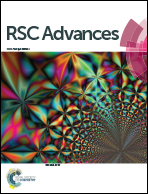Preparation and characterization of an amphiphilic polyamide nanofiltration membrane with improved antifouling properties by two-step surface modification method
Abstract
Membrane fouling is an urgent problem needing to be solved for practical application of nanofiltration membranes. In this study, an amphiphilic nanofiltration membrane with hydrophilic domains as well as low surface energy domains was developed, to integrate a fouling-resistant defense mechanism and a fouling-release defense mechanism. A simple and effective two-step surface modification of a polyamide NF membrane was applied. Firstly, triethanolamine (TEOA) with abundant hydrophilic functional groups was grafted to the membrane surface via reacting with the residual acyl chloride group of the nanofiltration membrane, making the nanofiltration membranes more hydrophilic; secondly, the 1H,1H,2H,2H-perfluorodecyltrichlorosilane (PFTS), well-known as a low surface energy material, was covalently grafted on the hydroxyl functional groups through hydrogen bonding. Filtration experiments with model foulants (bovine serum albumin (BSA) protein solution, humic acid solution (HA) and sodium alginate solution (SA)) were performed to estimate the antifouling properties of the newly developed nanofiltration membranes. As a result of surface modification proposed in this study the antifouling properties of an amphiphilic modified F-PA/PSF membrane were enhanced more than 10% compared to the PA/PSF specimen in terms of flux recovery ratio.



 Please wait while we load your content...
Please wait while we load your content...